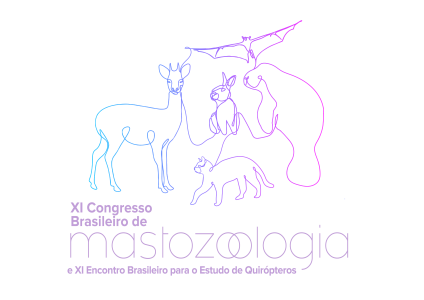Dados do Trabalho
Título:
POPULATION DENSITY OF THE SMALL RED BROCKET DEER (MAZAMA JUCUNDA) IN THE RIO DOCE STATE PARK, BRAZIL
Resumo:
The Rio Doce State Park, the largest Atlantic Forest fragment in Minas Gerais, Brazil, harbors two Mazama species, the Gray Brocket Deer (M. gouazoubira, Blastocerina subtribe) and another species whose preliminary identification, based on phylogenetic evidence, is the Small Red Brocket Deer (M. jucunda, Odocoileina subtribe). The population of M. jucunda in this area is of great value because its current distribution is restricted to the extreme east of São Paulo, Paraná and Santa Catarina states. Besides, it is classified as Vulnerable by the International Union for Conservation of Nature. Alongside with precisely identifying species and determining its distribution, reliable population density estimates are fundamental to address management effectively. This work aimed to estimate the population density of M. jucunda in the Rio Doce State Park using the Fecal Standing Crop method (FSC). To achieve this goal, the sampling design was carried out in thirteen transects (sampling units) made throughout the study area with the aid of a scat detection dog. All transects were at least 1 km apart and fecal samples were collected and properly stored. To exclude samples belonging to M. gouazoubira, a PCR/RFLP protocol was performed based on a 224 bp fragment of the mitochondrial gene Cytochrome b (CytB) followed by digestion with the SspI restriction enzyme, which differentiates M. gouazoubira from other Odocoileina subtribe species. The population density (D) was estimated using the FSC formula, which is D = ((N/(Wd*L))/P)/(R*Min(T,A)), where: N = number of samples, L = size of transect in meters, Wd = dog sampling strip width in meters, P = dog detection effectiveness, R = species defecation rate per day, T = fecal mean persistence time in days and A = feces maximum age for dog detection in days. As result, the transects comprised 16,294 m in total, averaging 1253.38 ± 259.39 m, and 58 samples belonging to M. jucunda were collected, averaging 4.5 ± 3.91 samples. The estimated mean density was 0.67 ind/km2 (confidence interval [CI] 95%: 0.33 – 1.01; coefficient of variance [CV]: 94.3%). This result is of significant importance and could be useful for evaluating the species level of threat. Although improvements are necessary, as using parameters specific to the sampling site and increasing sampling effort, the FSC method has shown to be promising because of the species elusive behavior, usually dense forest habitat and high morphological similarity.
Keywords
Population estimate, Cervidae, Atlantic Forest, Fecal Standing Crop, Scat detection dog
Financiamento:
São Paulo State Research Foundation (FAPESP; grant 2021/02087-2)
Área
Ecologia
Autores
Jeferson Lucas Sousa Freitas, Francisco Grotta-Neto, José Maurício Barbanti Duarte
